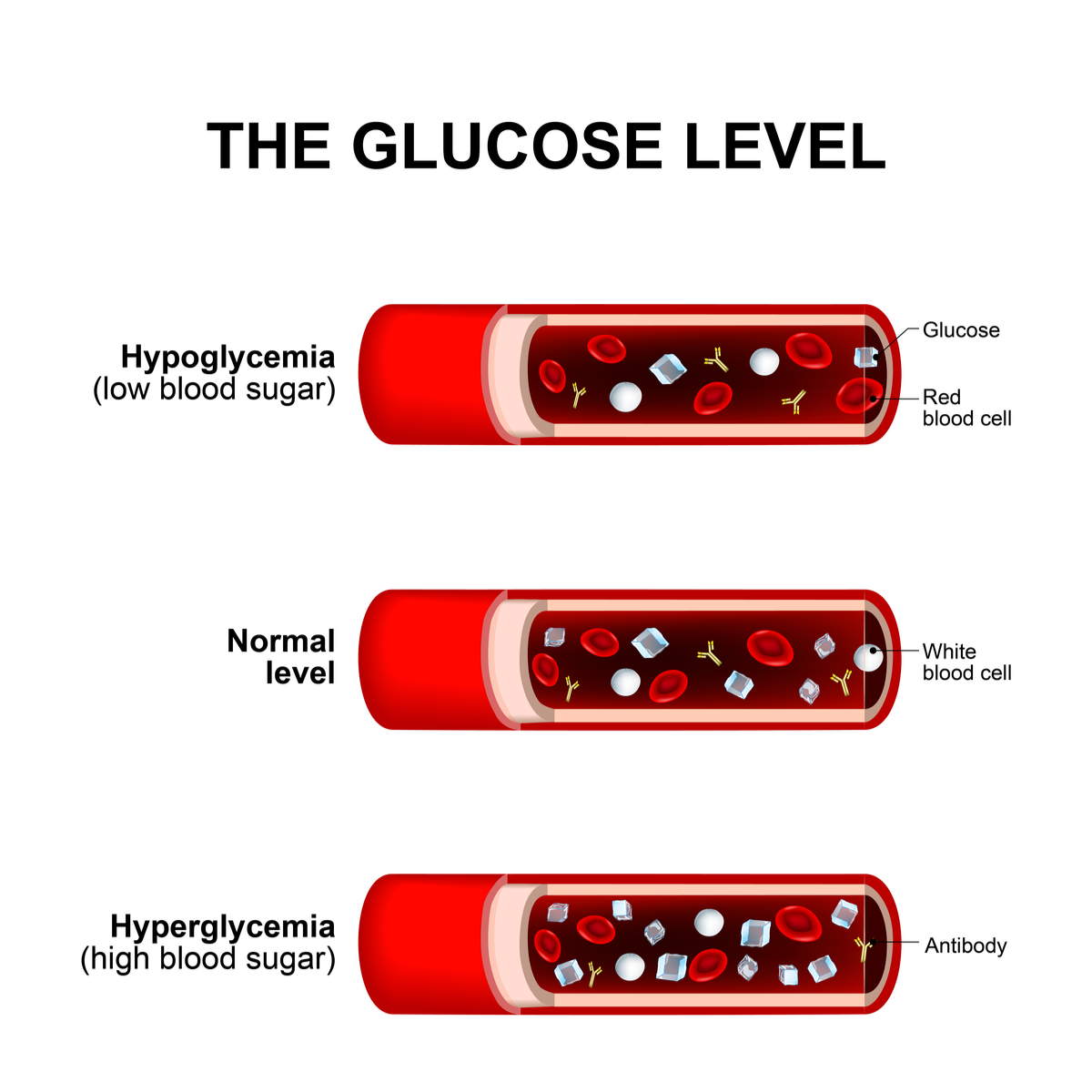Table of Contents
What is hypoglycemia or low blood sugar?
Hypoglycemia is the condition when the normal sugar level in the blood falls below values healthy for a person. For a majority of diabetics, this signifies a blood sugar reading below 70 milligrams per deciliter (mg/dL).
How common is it?
Hypoglycemia is common among individuals with type 1 diabetes and type 2 diabetes who use insulin or any other anti-diabetic drug. Among the adult population with diabetes who use insulin or any other medication that aids the release of insulin from the pancreas into the blood, 2 in 100 are found to develop seriously low blood sugar every year.
Who is more expected to develop hypoglycemia?
A person is more inclined to low blood glucose if he or she:
- has type 1 diabetes
- use insulin or some other anti-diabetic medications
- are aged 65 years or above
- has a history of low blood sugar before
- has other health issues like heart problems, kidney disorder, or cognitive impairment

The link between diabetes and low glucose
Low blood sugar is most common, beyond a doubt, in diabetics. Treatment for the illness frequently includes consuming medicine to augment insulin. Low blood glucose might develop if things such as exercise, food, or diabetes medicines are out of stability.
Common drawbacks for diabetics may include:
- Consuming late or missing out on meals.
- Being more physically active than normal.
- Not consuming a sufficient amount of carbs.
- Not balancing meals by adding in fiber, fat, and protein.
- Not timing insulin as well as carb consumption appropriately (for instance, waiting too long to consume a meal after using insulin for the meal).
- Drinking alcohol without consuming.
In addition, if somebody having diabetes makes use of the wrong insulin, consumes an excess, or injects it erroneously, that might bring about hypoglycemia.
If a person is using insulin or diabetes medicine, he or she may be at risk of developing low blood glucose or hypoglycemia. In the absence of quick consideration, hypoglycemia may cause serious complications, thus it’s significant to know what to do when this occurs. In very serious cases, hypoglycemia may bring about seizures or loss of consciousness.
It’s likely to suffer from low sugar signs but have no symptoms, as per the National Institute of Diabetes and Digestive and Kidney Diseases (NIDDK). Instead, signs may also arise quickly. Whereas signs differ from individual to individual, if a person develops mild to moderate low blood glucose, he or she might:
- Sweat a lot
- Turn pale
- Feel shaky or frazzled
- Have a headache or be dizzy
- Be starving
- Have heart palpitations
- Have an unclear vision or see double
- Be short-tempered or aggressive
- Have trouble concentrating

Your Low Blood Sugar Action Plan
If a person experiences signs of hypoglycemia, it’s significant to take action. Begin taking these steps:
Keep a regular track of blood glucose levels: If a person identifies any of these signs and is certain of too low readings of blood sugar, the initial step a person must take is to test his or her blood glucose using an appropriate glucose meter. Any value below 70 milligrams per deciliter (mg/dl) is considered low blood sugar. On the other hand, target levels are repeatedly individualized, so a discussion with a doctor regarding the optimal numbers is a must.
Consume or drink fast-acting carbohydrates: If a person has low blood sugar, he or she must take suitable action right away. He or she must take roughly 15 grams of carbs. Few options can be:
- 1 tablespoon of honey or maple syrup
- 1 tablespoon of sugar dissolved in water
- ½ cup or 4 ounces of orange juice
- 2 tablespoons of raisins
- 5 or 6 hard candies, jelly beans, or gumdrops
- ½ cup or 4 ounces of regular soda (not diet)
- ½ cup of applesauce
Also, 3 to 4 glucose tablets or a tube of sugar gel can be taken. Every person who takes medicines for diabetes must always have sugar tablets with them.
Wait, then retest: The resulting step is to wait for 15 minutes, then again check the blood sugar. If blood glucose has reached 100 mg/dl or higher, then a person is fine. If not, then repeat the test. If the person’s blood glucose is still low, additional 15 grams of carbs can be eaten, and then wait another 15 minutes, and check the levels again. The person requires repeating these steps until his or her blood sugar gets rectified.
When the glucose levels return to normal
Once a person feels better, it’s good to include some protein to keep the blood glucose levels within the normal range. Smart alternatives can be a handful of peanuts, peanut butter, or cheese.
When to call a healthcare provider
If a person is facing difficulty while normalizing the glucose levels, call a healthcare provider right away. Unmanaged hypoglycemia might cause a person to seize or become lifeless.
Low blood sugar is quite common in diabetics. If not managed, it might bring about worrying symptoms and even severe health issues. Luckily, a person may avoid hypoglycemic incidents by tracking blood glucose. A person may also make slight modifications to consumption and exercising routines. A discussion with a doctor regarding the low blood glucose risk. If a person experiences recurrent bouts of low blood sugar, make sure to discuss with the concerned physician. The solution can be as simple as altering the amount or the type of anti-diabetic medications a person consumes.
You must be logged in to post a comment.